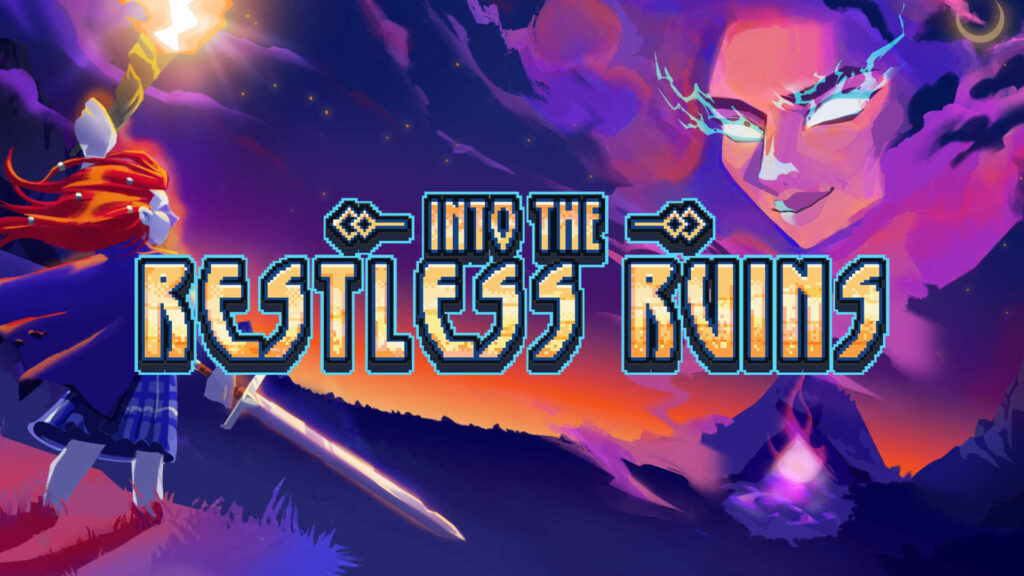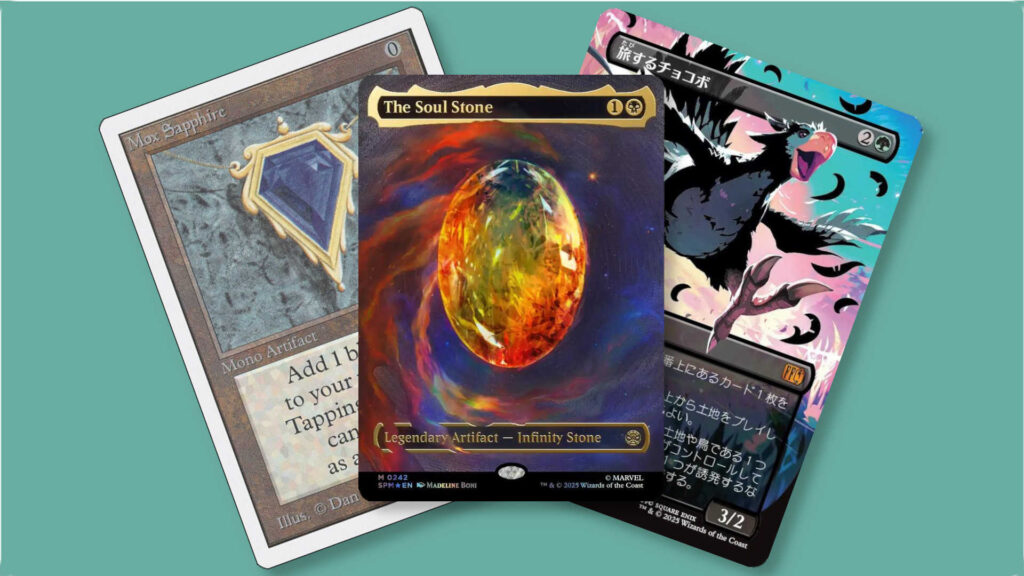Wales Interactive are a video game developer primarily known for their FMV (or Full Motion Video) based titles, with impressive, modern takes on the classic ‘interactive movie’ genre. Though this was a common video game type in the 90s, it felt as if the technology wasn’t quite there to do justice to the concept. Yet Wales Interactive have consistently shown what’s possible with video-based gaming, now that modern technology and game design has caught up to the ambitions of developers. Into the Restless Ruins is a bit of a departure from their usual adventure and FMV style, however, being a deckbuilding game with some very interesting twists, and a compelling gameplay loop. Is it fun to play? Let’s find out, as we take a closer look at Into the Restless Ruins.
Table of Contents
ToggleWhat Is Into the Restless Ruins?
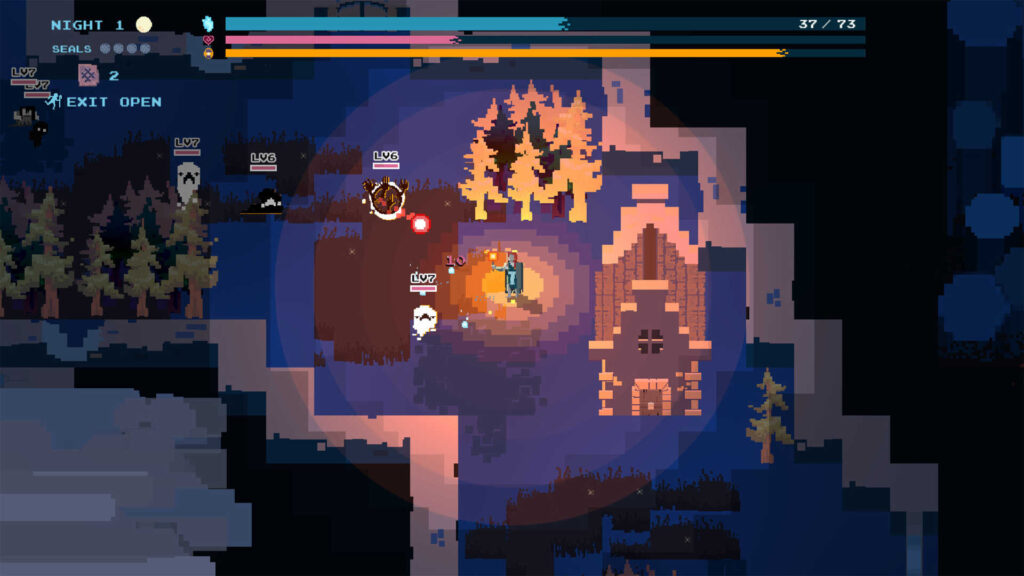
Dungeon delving and deckbuilding meet in Into the Restless Ruins, which uses cards not for attacks or spells, but instead to create the very map that you’ll explore and try to conquer. It’s a genre-defying hybrid of roguelike deckbuilding games, auto-battling shoot ’em ups such as Vampire Survivors, and even a touch of Tetris. Despite its unusual nature, it’s a game that’s easy to learn and play.
How to Play Into the Restless Ruins
You’ll begin each run of Into the Restless Ruins, as is the case with just about any deckbuilding game, with a basic selection of cards. The aim of the game is to find and break Seals which are guarding each ruin’s Warden from being reached; once you’ve got to the Warden, which is a massive and very powerful boss creature, you’ll need to defeat it in combat in order to complete the run.

There are two main phases to Into the Restless Ruins; the first will see you drawing a hand of cards, and using these to add to the map of the ruins, creating new paths, adding new types of room and building in healing spots, or camp fires which will increase the time you get to explore.
Each card has a build point (or BP) cost, and you only have a limited number of these each turn. Each room or passageway on your cards has a shape, and entryways. Likewise for rooms already on the map, some of which are obscured until you actually reach them in the next phase. To place a card, you’ll need to line it up with existing entry/exit points on the map, adding a block puzzling aspect to the game.
Once you’ve used up your BP by placing cards onto the dungeon map, the next phase begins, and here’s where things diverge even more from what you might expect in a roguelike deckbuilding game.
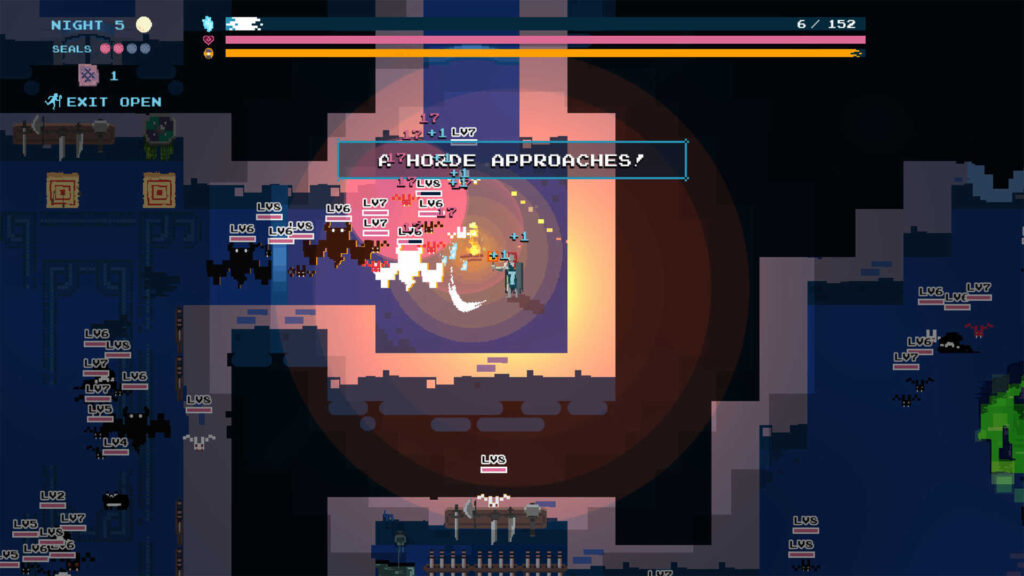
The harvest phase sees you taking control of your character and exploring the dungeon from a top-down view, not unlike a game such as 80s arcade classic, Gauntlet, harvesting ‘glimour’ to level up. and find other resources in order to access more cards and upgrades as you go.
Combat is automatic, with attacks occurring as soon as an enemy is in range. What’s important here is your positioning and timing; you need to keep pushing forward, as your torch is getting dimmer every second you’re in the ruin, but you also need to keep an eye on your health as you go. As your torch dims, you’ll start to lose visibility and will need to do your best to make your way back to the starting portal; if the torch dims completely, you’ll lose health until you reach the portal and escape, kickstarting the next build phase.
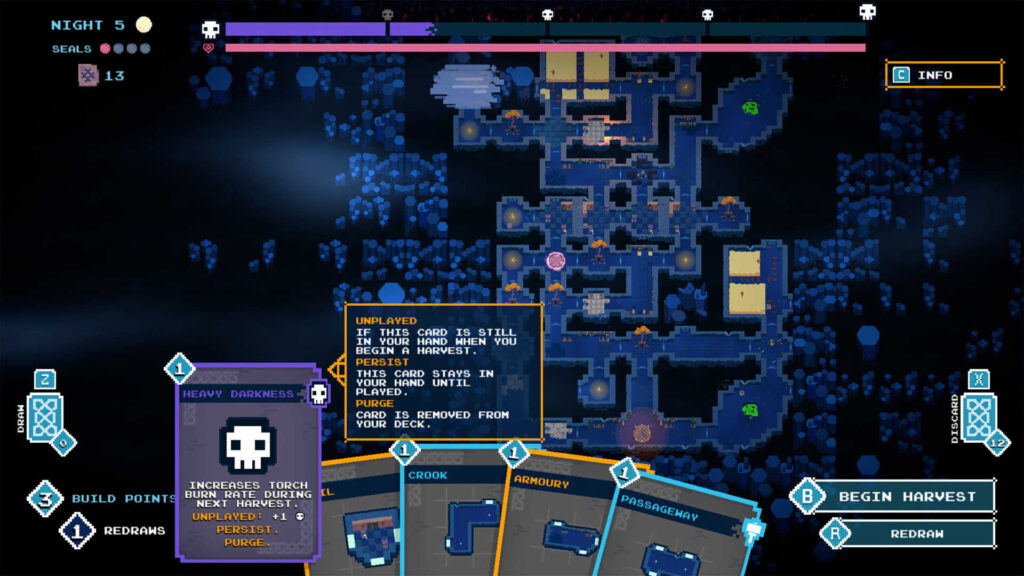
However, losing all of your health will end the harvest phase, and will add to the corruption level of your current run.; as this increases, Curse cards are added to your hand, making each turn even more challenging. When the corruption level is completely full, your run is over. If you can beat the Warden before that happens, however, you win!
Is Into the Restless Ruins Fun to Play?
Though the game styles of Into the Restless Ruins may initially seem to be at odds with each other, with an awful lot of different mechanics thrown into the mix, in practice it makes for an incredibly compelling and addictive experience.
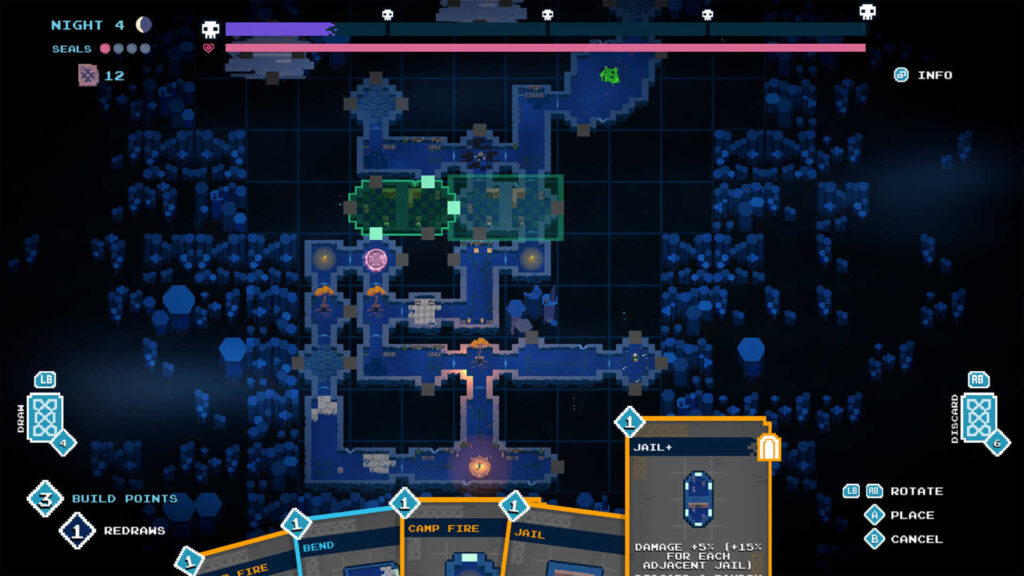
There are so many different and nuanced levels of strategy to take into consideration; when you first begin playing, you’ll likely concentrate on just being able to place your cards and reach the obscured areas on the map to find the next Seals; it rapidly becomes apparent that you can end up making your map incredibly complicated and get lost without being able to escape the ruins each night, so you start being more considered in how you place your cards before the harvest.
Then you’ll realize that you also need to build in camp fires at strategic points to replenish your torch, and faded groves to heal. It’ll occur to you in turn that you’re also going to need these on the way back through the ruins to the exit portal, so you’ll have to position them in such a way that you can ration their use as you explore further, leaving some to be picked up on your return to the start of the ruins.
There’s so many different enemies and card types to consider too; rooms which give you attack bonuses, or slow down the burning of your torch, for example, observatories that pull your view back to help you navigate the ruins you’ve built, or even characters who’ll upgrade cards, or sell you more.
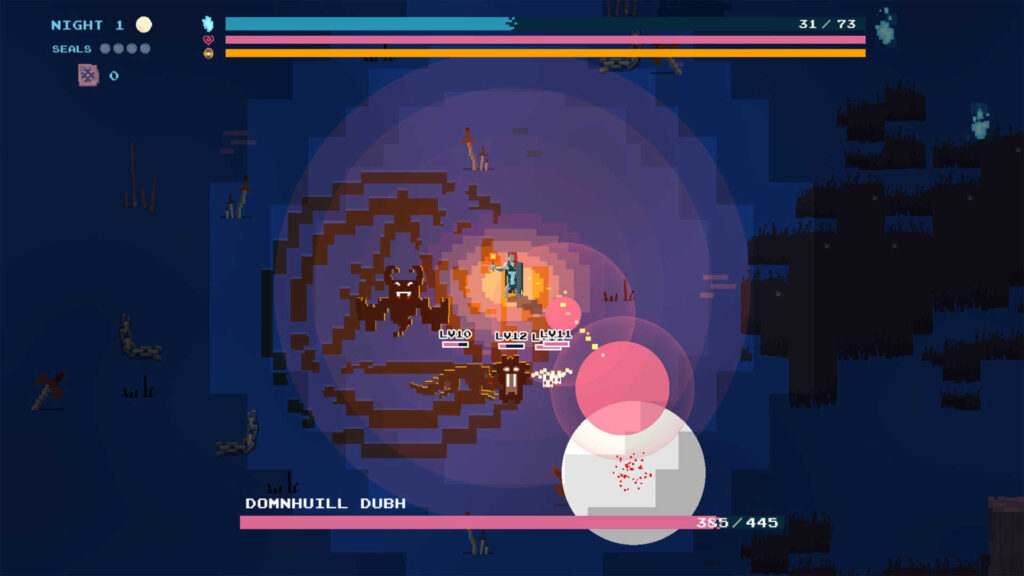
This layered, strategic thinking keeps things constantly engaging, and cleverly setting yourself up for the next harvest is always enjoyable, as is the thrilling, push-your-luck nature of the harvest phase itself. It also helps that, while many of the game’s mechanics have been seen before, they’ve never been put together in this way before, and Into the Restless Ruins makes the most of its unique fusion of familiar tropes.
I’ve also got to mention the fact that it has an absolutely phenomenal, synthwave-esque soundtrack, which helps to add to the pulse-pounding nature of progressing through the ruins which you’ve built yourself over several turns.
It’s also worth nothing that failure during a harvest phase doesn’t feel as unforgiving as most roguelike games tend to feel; instead, the corruption level keeps you coming back for more over a much longer period than you would be used to on a run through a different deckbuilding game, with the challenge steadily increasing rather than ending the attempt completely.
There’s plenty of cards, upgrades and even new stages to unlock, so if the unique gameplay of Into the Restless Ruins grabs you, it’ll likely keep you entertained and challenged for a long time to come.
The Card Gamer Verdict
A fusion of game mechanics, with Into the Restless Ruins adding block placement, dungeon delving and auto-battling to the roguelike deckbuilding, results in a truly unique experience.
Of course, being unique would mean nothing if Into the Restless Ruins didn’t have the gameplay to back up its hybrid gameplay, but thankfully it delivers in spades on that front too, making for a digital deckbuilding game that’s truly compelling and certain to be unlike anything you’ve played before.
Add a superb pixel art aesthetic and stunning soundtrack, and it’s clear that Into the Restless Ruins is another digital deckbuilding game that’s well worth your time.
Into the Restless Ruins is out now for PC, PS5, Xbox X|S and Nintendo Switch.
Want to check out other unique digital deckbuilding games? Take a look at our reviews of Out of Hands and SpellRogue.


